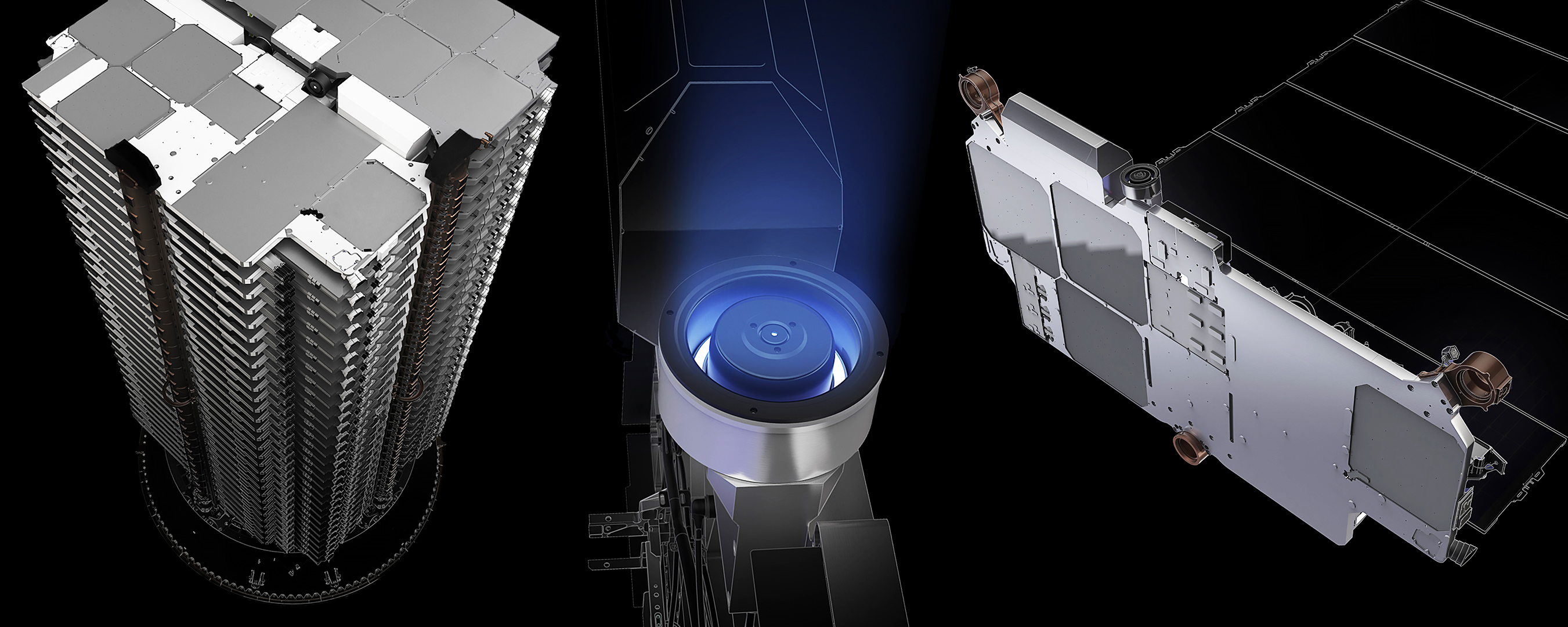

News
SpaceX Starlink launches to debut rideshare capabilities next month
According to SpaceX and customer Planet, the company will start offering Starlink rideshare launch opportunities as early as next month, opening up space for other companies, space agencies, and individuals to get their payloads into space.
SpaceX’s decision to co-opt its own Starlink missions as a vehicle for rideshare payloads is perhaps one of the most interesting strategic moves in the smallsat launch ecosystem in awhile. Announced in early-August 2019, SpaceX’s Smallsat Rideshare Program effectively marked the company’s entrance into the burgeoning smallsat launch services industry. Rather than the launch industry proper, the services industry focuses on finding ways to put tiny satellites on rockets that would normally be far too large to serve as a practical solution. By finding multiple customers and wrangling with their different schedules, spacecraft, and requirements, dozens of smallsats can be launched in such a way that it’s actually worth a large launch provider’s focus.
In the past, SpaceX famously worked with Spaceflight to launch the SSO-A mission in December 2018, using all of a Falcon 9 rocket’s performance to place 64 small satellites in orbit. After many, many delays and numerous planned customers still missing the launch, both Spaceflight and SpaceX came away with the conclusion that a fully dedicated smallsat launch at the scale of Falcon 9 was simply not a practical approach to the problem. Instead, spreading the ~120 satellites originally manifested on SSO-A over 3-6 smaller missions would be far more sustainable for all parties involved. With SpaceX’s Starlink rideshare strategy, the company may have done exactly that.
Each weighing about 115 kg (~250 lb) each and standing roughly the same size as a large mini-fridge, Planet has broken the news that three of its SkySat imaging satellites will fly on SpaceX’s ninth dedicated Starlink launch. Known as Starlink-8 in reference to it being the eighth launch of finalized v1.0 satellites, the mission is scheduled to launch no earlier than June, likely 3-4 weeks after SpaceX’s 8th Starlink launch (NET May 17).
After Starlink-8, Planet will include another three SkySats on an unspecified Starlink mission, also scheduled to launch sometime in Q3. Once complete, the earth imaging company’s fleet of high-resolution (~0.5m/px) observation satellites will be 21 strong,
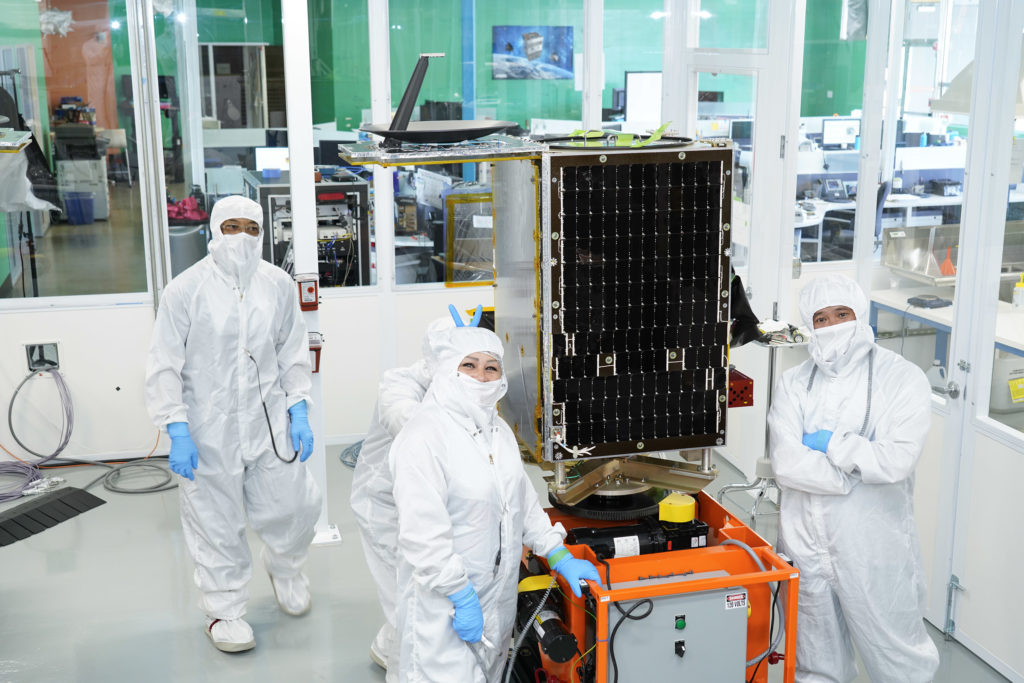
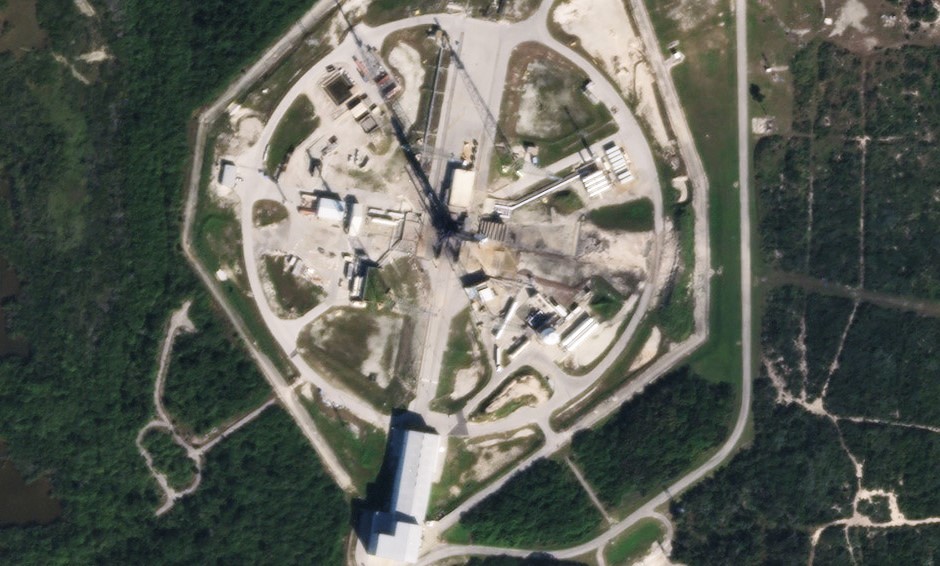
Until SpaceX or its rideshare customers choose to release photos or offer up details, it remains unclear how the company’s Starlink rideshares will work from a technical perspective. Thanks to SpaceX’s extremely unique method of stacking and deploying each batch of 60 Starlink satellites, there will be a combination of challenges and benefits to grapple with. Because of Starlink’s flat, rectangular satellite design, a lot of space inside the Falcon payload fairing they occupy is left empty.
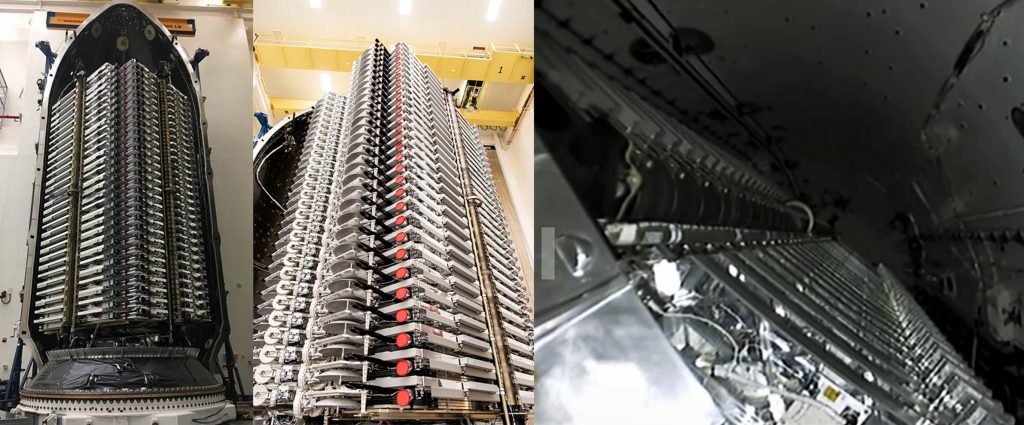
There’s a slight possibility that smaller satellites and their deployers could fit in the triangular gaps left at the bottom of Starlink stacks, but it’s unlikely that Planet’s relatively large (on the scale of smallsats) SkySats would fit in the constrained space. That leaves the large conical section left unused at the top of each Starlink-dedicated payload fairing. Given that SpaceX spins up Falcon 9’s upper stage and releases Starlink satellites like a deck of giant ~260 kg (~570 lb) cards, it’s highly unlikely that rideshare passengers could be deployed after the main Starlink deployment event.
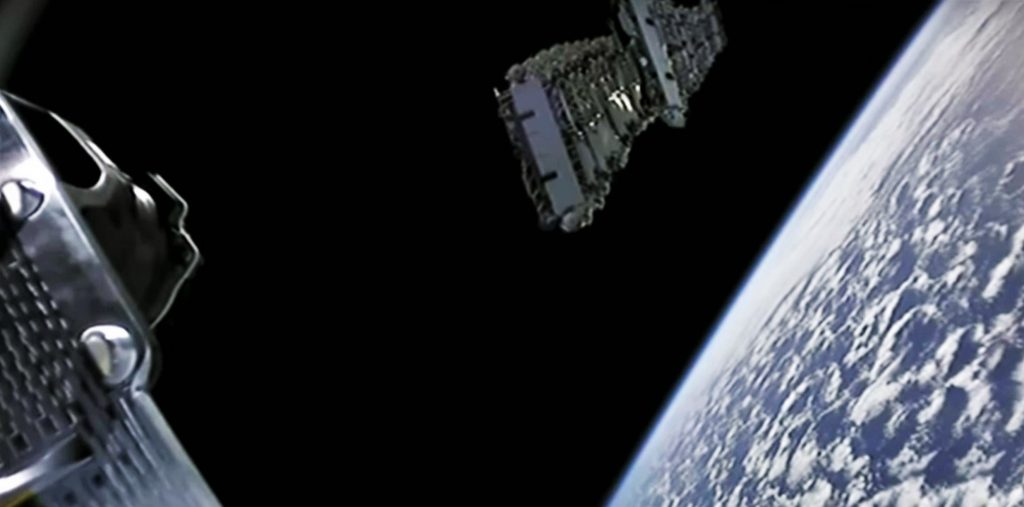
That leaves some kind of solution that mounts rideshare payloads on top of the stack of satellites. The most likely solution would involve somehow attaching a satellite deployment mechanism to the tensioning rods that hold the Starlink stack together and are ejected to release all 60 spacecraft at once. If that solution is possible, Falcon 9 could deploy rideshare payloads, spin up, discard the structural rods and deployers in one go, and eject all 60 Starlink satellites with having to tweak any of the spacecraft or change launch operations much at all. Regardless, it will be interesting to see how SpaceX has solved its unique deployment problem.
News
Tesla begins Robotaxi certification push in Arizona: report
Tesla seems serious about expanding its Robotaxi service to several states in the coming months.

Tesla has initiated discussions with Arizona transportation regulators to certify its driverless Robotaxi service in the state, as per a recent report from Bloomberg News. The move follows Tesla’s launch of its Robotaxi pilot program in Austin, Texas, as well as CEO Elon Musk’s recent comments about the service’s expansion in the Bay Area.
The Arizona Department of Transportation confirmed to Bloomberg that Tesla has reached out to begin the certification process for autonomous ride-sharing operations in the state. While details remain limited, the outreach suggests that Tesla is serious about expanding its driverless Robotaxi service to several territories in the coming months.
The Arizona development comes as Tesla prepares to expand its service area in Austin this weekend, as per CEO Elon Musk in a post on X. Musk also stated that Tesla is targeting the San Francisco Bay Area as its next major market, with a potential launch “in a month or two,” pending regulatory approvals.
Tesla first launched its autonomous ride-hailing program on June 22 in Austin with a small fleet of Model Y vehicles, accompanied by a Tesla employee in the passenger seat to monitor safety. While still classified as a test, Musk has said the program will expand to about 1,000 vehicles in the coming months. Tesla will later upgrade its Robotaxi fleet with the Cyercab, a two-seater that is designed without a steering wheel.
Sightings of Cybercab castings around the Giga Texas complex suggests that Tesla may be ramping the initial trial production of the self-driving two-seater. Tesla, for its part, has noted in the past that volume production of the Cybercab is expected to start sometime next year.
In California, Tesla has already applied for a transportation charter-party carrier permit from the state’s Public Utilities Commission. The company is reportedly taking a phased approach to operating in California, with the Robotaxi service starting with pre-arranged rides for employees in vehicles with safety drivers.
News
Tesla sets November 6 date for 2025 Annual Shareholder Meeting
The automaker announced the date on Thursday in a Form 8-K.

Tesla has scheduled its 2025 annual shareholder meeting for November 6, addressing investor concerns that the company was nearing a legal deadline to hold the event.
The automaker announced the date on Thursday in a Form 8-K submitted to the United States Securities and Exchange Commission (SEC). The company also listed a new proposal submission deadline of July 31 for items to be included in the proxy statement.
Tesla’s announcement followed calls from a group of 27 shareholders, including the leaders of large public pension funds, which urged Tesla’s board to formally set the meeting date, as noted in a report from The Wall Street Journal.
The group noted that under Texas law, where Tesla is now incorporated, companies must hold annual meetings within 13 months of the last one if requested by shareholders. Tesla’s previous annual shareholder meeting was held on June 13, 2024, which placed the July 13 deadline in focus.
Tesla originally stated in its 2024 annual report that it would file its proxy statement by the end of April. However, an amended filing on April 30 indicated that the Board of Directors had not yet finalized a meeting date, at least at the time.
The April filing also confirmed that Tesla’s board had formed a special committee to evaluate certain matters related to CEO Elon Musk’s compensation plan. Musk’s CEO performance award remains at the center of a lengthy legal dispute in Delaware, Tesla’s former state of incorporation.
Due to the aftermath of Musk’s legal dispute about his compensation plan in Delaware, he has not been paid for his work at Tesla for several years. Musk, for his part, has noted that he is more concerned about his voting stake in Tesla than his actual salary.
At last year’s annual meeting, TSLA shareholders voted to reapprove Elon Musk’s compensation plan and ratified Tesla’s decision to relocate its legal domicile from Delaware to Texas.
Elon Musk
Grok coming to Tesla vehicles next week “at the latest:” Elon Musk
Grok’s rollout to Tesla vehicles is expected to begin next week at the latest.

Elon Musk announced on Thursday that Grok, the large language model developed by his startup xAI, will soon be available in Tesla vehicles. Grok’s rollout to Tesla vehicles is expected to begin next week at the latest, further deepening the ties between the two Elon Musk-led companies.
Tesla–xAI synergy
Musk confirmed the news on X shortly after livestreaming the release of Grok 4, xAI’s latest large language model. “Grok is coming to Tesla vehicles very soon. Next week at the latest,” Musk wrote in a post on social media platform X.
During the livestream, Musk and several members of the xAI team highlighted several upgrades to Grok 4’s voice capabilities and performance metrics, positioning the LLM as competitive with top-tier models from OpenAI and Google.
The in-vehicle integration of Grok marks a new chapter in Tesla’s AI development. While Tesla has long relied on in-house systems for autonomous driving and energy optimization, Grok’s integration would introduce conversational AI directly into its vehicles’ user experience. This integration could potentially improve customer interaction inside Tesla vehicles.
xAI and Tesla’s collaborative footprint
Grok’s upcoming rollout to Tesla vehicles adds to a growing business relationship between Tesla and xAI. Earlier this year, Tesla disclosed that it generated $198.3 million in revenue from commercial, consulting, and support agreements with xAI, as noted in a report from Bloomberg News. A large portion of that amount, however, came from the sale of Megapack energy storage systems to the artificial intelligence startup.
In July 2023, Musk polled X users about whether Tesla should invest $5 billion in xAI. While no formal investment has been made so far, 68% of poll participants voted yes, and Musk has since stated that the idea would be discussed with Tesla’s board.
-

 Elon Musk1 week ago
Elon Musk1 week agoTesla investors will be shocked by Jim Cramer’s latest assessment
-

 Elon Musk3 days ago
Elon Musk3 days agoElon Musk confirms Grok 4 launch on July 9 with livestream event
-

 Elon Musk14 hours ago
Elon Musk14 hours agoxAI launches Grok 4 with new $300/month SuperGrok Heavy subscription
-

 News7 days ago
News7 days agoTesla Model 3 ranks as the safest new car in Europe for 2025, per Euro NCAP tests
-

 Elon Musk2 weeks ago
Elon Musk2 weeks agoA Tesla just delivered itself to a customer autonomously, Elon Musk confirms
-

 Elon Musk1 week ago
Elon Musk1 week agoxAI’s Memphis data center receives air permit despite community criticism
-

 Elon Musk2 weeks ago
Elon Musk2 weeks agoTesla’s Omead Afshar, known as Elon Musk’s right-hand man, leaves company: reports
-

 News2 weeks ago
News2 weeks agoXiaomi CEO congratulates Tesla on first FSD delivery: “We have to continue learning!”

















